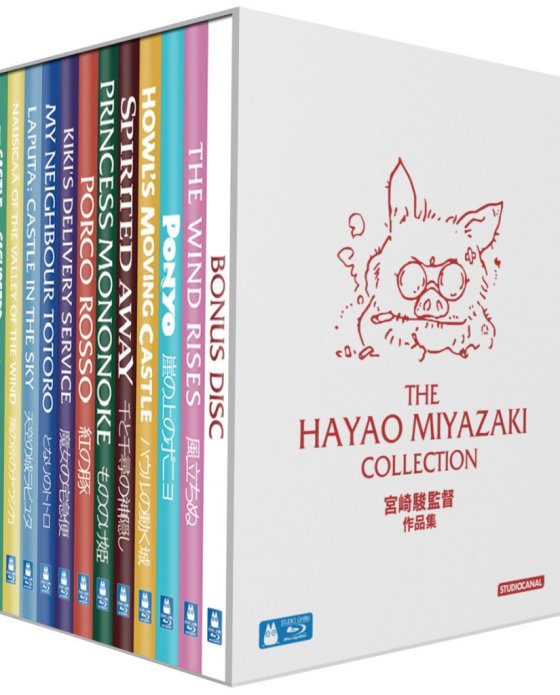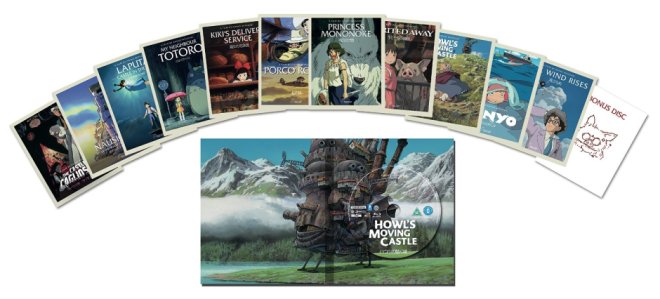
There are very few directors who have a firm grasp on both reality and fantasy quite like Hayao Miyazaki does. Creating kinetic castles, bear like spirits or interpreting war time airplane marvels; he tells sentimental stories in a distinct fashion. He’s a marvelous animator, with his influence being seen and appreciated by many filmmakers worldwide, regardless of their work being animated or live action. His art lies in his storytelling. Whilst films like Spirited Away are beautiful due to their ambiguous complexity, he can convey equal amounts beauty through child friendly work such as My Neighbour Totoro, and still remain deftly symbolic. Whilst a select few directors have a definitive masterpiece to be proud of, Miyazaki has many.
The director announced his retirement in autumn last year to a cinematic crowd full of sadness and disappointment. After his swan song, the emphatic and moving ‘The Wind Rises’, Miyazaki was left with a collection of films that stand stead in the world of cinema. Eleven films later, Studio Canal have compiled a box set of his work whilst at Studio Ghibli; a collection of films that have both defined and influenced a cinematic generation.
Miyazaki’s body of work at Ghibli has a history of over 30 years. From his first feature, 1979’s The Castle of Cagliostro to 2013’s The Wind Rises, his work has had a bold influence on the work of his peers. Pixar’s John Lasseter considers him a friend and a role model, previously stating that the Miyazaki influence can be seen in all of their work, notably their classic, Toy Story. When watching this awe inspiring collection of films, you notice minute details that have translated into Western cinema from Ghibli’s comparably unknown collection.
Even his weaker works surpass his peers in terms of quality. Truth be told there is no weak Ghibli film when Miyazaki is at the helm. His early works are adventure films set against the backdrops of mystical cities, all exemplary in their field. Around the early nineties, his work became a lot more magical. Arguably the studio’s most memorable film, My Neighbour Totoro deals with two young girls, their unwell mother and their escape into the woods, discovering mythical sprites and monsters. The star, the Totoro itself, remains Ghibli’s logo and the Japanese equivalent to Mickey Mouse. It’s a masterful piece of work; both exploratory and sensitive, laden with a gorgeous metaphorical undertone. This film started the studio’s affinity with enchantment through character and storytelling.
In Kiki’s Delivery Service, a young witch sets off from her mother and town to discover the wide world. Her flying skills earn her a job in Koriko, a seaside town reminiscent of Europe’s port villages. It’s perhaps one of his most nostalgic works; a tale of flying the nest and discovering the importance of independence. Still close to the stunningly illustrated Miyazaki waters, Porco Rosso is one of his most obscure works. A man cursed to become an anthropomorphic pig acts as a bounty hunter to the air and sea pirates surrounding his town. It’s a return to the riotous affairs Miyazaki is often fond of, but has a love story at its heart.
Princess Mononoke was a defining moment for the studio and, in turn, for animation as a genre. It was a striking turning of the tables in cinema, where animation had the ability to match and exceed the emotional gravitas and topical relevance that live action cinema did. A battle between forest gods and human beings for the rights to their land echoes the modern day fight between nature and the humans that take advantage of it. It’s a film that, to this day, remains a blatant influence in ecological film making (watch this, and then Avatar). In terms of critical acclaim, this is widely described as Studio Ghibli’s greatest work.
Two years later, and Japanese animation is brought to the attention of the world once again thanks to Spirited Away, Ghibli’s most recognizable film. The story of Chihiro, a young girl lost in a spirit world seperated from her parent’s, was Miyazaki’s interpretation of Carroll’s fairytale Alice in Wonderland. It’s obscure, charming and endlessly creative. The famed trio is rounded out by Howl’s Moving Castle. An adaptation of a children’s novel by Diana Wynne Jones, it is a broad, sumptuous story with a spectacular amount of character.
Things took a much more childlike turn once again with Ponyo, Miyazaki’s interpretation of the classic ‘The Little Mermaid’ fairytale. Whilst being admittedly a loose adaptation, it’s his most colourful, innocent and playful work yet. The kind of film so sweet it should be obligatory viewing for everyone, regardless of whether you’re a five year old child or their seventy-something grandparent.
After years of claiming that ‘the next one is the last’, Miyazaki finally let the curtain fall after the tender biopic, The Wind Rises. Earning him an Oscar nomination, the film was internationally praised and rightly so. It’s a film about a man in love with his craft; so much so he does everything to make his work perfect – a perfect reflection of Miyazaki himself.
Film Ratings:
The Castle of Cagliostro – ![]()
![]()
![]()
![]()
![]() | Nausicaa: The Valley of the Wind –
| Nausicaa: The Valley of the Wind – ![]()
![]()
![]()
![]()
![]()
Laputa: Castle in the Sky – ![]()
![]()
![]()
![]()
![]() | My Neighbour Totoro –
| My Neighbour Totoro – ![]()
![]()
![]()
![]()
![]()
Kiki’s Delivery Service – ![]()
![]()
![]()
![]()
![]() | Porco Rosso –
| Porco Rosso – ![]()
![]()
![]()
![]()
![]()
Princess Mononoke – ![]()
![]()
![]()
![]()
![]() | Spirited Away –
| Spirited Away – ![]()
![]()
![]()
![]()
![]()
Howl’s Moving Castle – ![]()
![]()
![]()
![]()
![]() | Ponyo –
| Ponyo – ![]()
![]()
![]()
![]()
![]()
The Wind Rises – ![]()
![]()
![]()
![]()
![]()
For fans of Miyazaki who are yet to dive into the world of high definition, this set is an ideal gift or gift to yourself. It should be noted that the individual releases have special features whereas the discs in this set are solely the films. There is one features disc that includes a 45 minute press conference to announce Miyazaki’s departure, but that’s it. We’re all eagerly awaiting the entire Ghibli collection but not with such bated breath. These collections seem to mark the end of an era, and for Studio Ghibli as a whole, there is little sign of stopping.
The Hayao Miyazaki Collection is released on Blu-Ray, Monday December 8th
Editor of Frowning.us (SSJA 2014 Student Publication of the Year) & Film Writer for The Edinburgh Reporter












